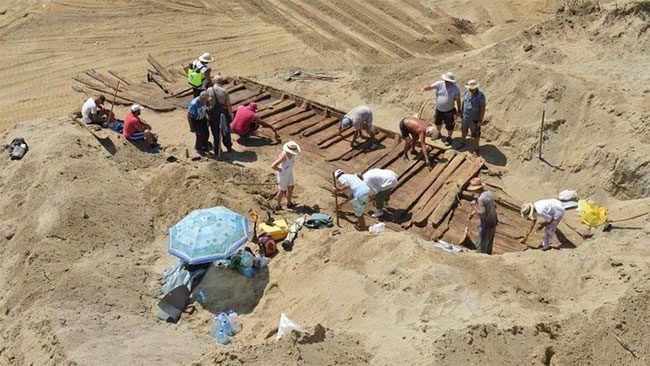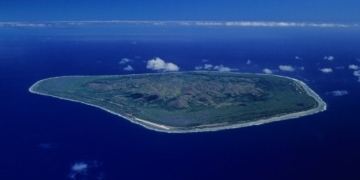The ghost ship measures up to 20 meters long, with a flat bottom like a barge, and could be an important treasure revealing the famous Roman city of Viminacium.
According to Live Science, the ghost ship was discovered by coal miners in Serbia, right in the ancient border region of the Roman Empire.
Archaeologists are still awaiting official carbon dating results, but they believe it dates back to the 3rd or 4th century AD, making it at least 1,700 years old.

A part of the Roman ghost ship gradually revealed during the excavation in Serbia – (Photo: SERBIAN ARCHAEOLOGICAL INSTITUTE).
The excavation team is racing against time, as ancient wood exposed to bright sunlight can deteriorate extremely quickly, threatening the preservation of this treasure. They have been continuously watering the ship to keep it moist while they work.
This ghost ship is 20 meters long and 3.5 meters wide, with a flat bottom like a barge, leading archaeologists from the Serbian Archaeological Institute (based in the capital Belgrade) to believe that it is a large cargo ship.
The design of the ship and its location suggest that in the past, it may have been used to transport goods to the city of Viminacium, located about 1 mile along the Danube River. It could have operated by being pulled by people on the shore or using paddles.
No clear remnants of a sail have been found; however, scientists believe this ship may have had a secondary sail to take advantage of favorable winds.
Research on the ghost ship has only just begun, but scientists believe it is an important link to the legendary Viminacium, a significant commercial and cultural hub of the region.
Viminacium was a settlement combined with a military fortress, the capital of the border province of Moesia Superior in the Roman Empire, with a population of up to 45,000—a massive number for that time.
This city was established in the early years of the 1st century AD and was destroyed by the Huns in 411, who ended Roman rule in much of Europe.
In the early 6th century, Viminacium was rebuilt by Emperor Justinian of the Byzantine Empire, but was again destroyed at the end of the century by the invasion of the Avars from the Eurasian steppes.


















































